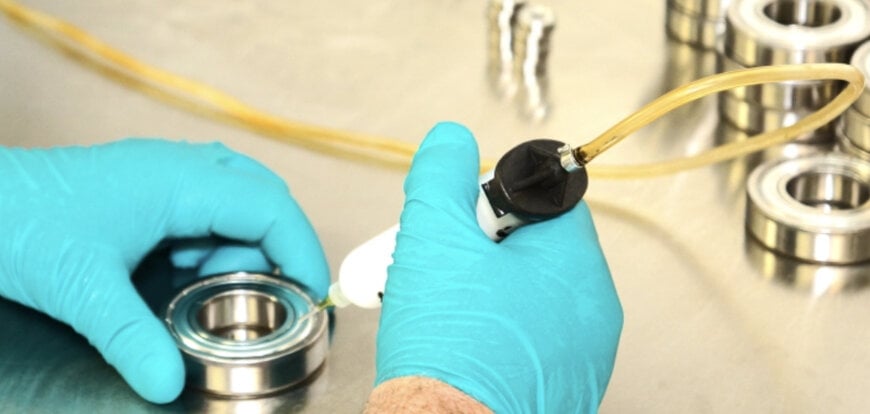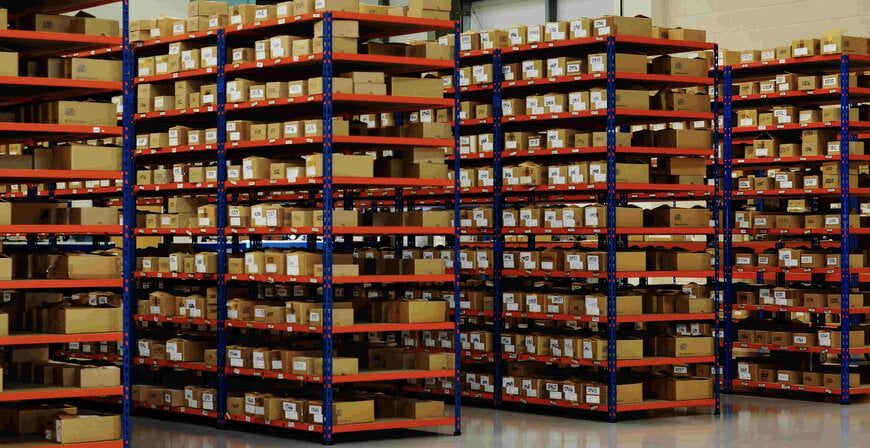Should you opt for custom or off-the-shelf bearings?
Chris Johnson, managing director of SMB Bearings, explores how custom and off-the-shelf options address technical, budgetary, and operational needs, guiding engineers to balance cost, lead time, and performance.
www.smbbearings.com

The choice of bearings in machinery design significantly affects performance, durability and cost. Bearings are essential for reducing friction, supporting loads and allowing smooth operation of moving parts. With the rise in demand for highly specialised machinery and growing interest in custom manufacturing, engineers often face a critical decision, selecting custom bearings tailored to their application or opting for readily available off-the-shelf solutions. Here, Chris Johnson, managing director of bearing specialist SMB Bearings, weighs up the advantages and disadvantages.
For engineers working under tight deadlines or within budget constraints, off-the-shelf bearings often provide the most practical solution. These bearings are mass-produced, ensuring consistent availability and significantly reducing lead times compared to custom alternatives. Their large-scale manufacturing also benefits from economies of scale, lowering costs without compromising quality.
What’s more, off-the-shelf bearings undergo rigorous standardisation and testing to meet industry standards, like ISO 281, bearing life calculation and ISO 492, tolerance classes for rolling bearings. Compliance with these standards ensures predictable performance and reliability across a wide range of applications, from industrial machinery to aerospace systems.
Another key advantage of off-the-shelf bearings is their versatility. With a broad range of options designed to accommodate different loads, speeds and environmental conditions, they are widely used across industries, including automotive, medical and manufacturing sectors.
When custom bearings are necessary
While off-the-shelf bearings are suitable for many applications, some scenarios require a more tailored approach. Custom bearings are specifically designed to meet unique specifications such as non-standard sizes, extreme operating conditions or specialised load capacities.
The aerospace industry is increasingly using custom parts and components to enable more diverse and specialised aircraft designs. For instance, industries like aerospace and medical devices often require bearings with high precision — meaning tight dimensional tolerances, low friction and consistent rotational accuracy. These bearings must also be resistant to harsh environments and capable of functioning under high speed or heavy load conditions. Custom bearings allow engineers to address these challenges, ensuring optimal performance and durability.
However, custom solutions come with trade-offs. The design and manufacturing process often require significant time and investment, resulting in higher costs and longer lead times. Engineers must carefully evaluate whether the added benefits of custom bearings justify these challenges.

Custom or off-the-shelf — how do you decide?
When making the choice between custom and off-the-shelf bearings, it is crucial to assess several key factors to ensure the most suitable choice for your application.
First, consider the specific requirements of your application. Are there unique operating conditions, such as high temperatures, unusual loads or non-standard dimensions that off-the-shelf bearings may not be able to address? If the answer is yes, then custom bearings may be the better option.
Next, evaluate the project’s budget. Custom bearings often involve higher manufacturing and design costs, so it’s important to determine whether the additional expense aligns with any financial constraints.
Alongside costs, lead time is another consideration. Deloitte reported in its 2025 Manufacturing Industry Outlook that despite lead times have shown improvement since pre-pandemic levels, global supply chain disruptions persist. It predicts that companies are expected to face continued supply chain risk in 2025, due to factors like geopolitical tensions, labour shortages and rising input costs.
Custom bearings typically require longer production timelines, which could impact your overall schedule. If a faster turnaround is essential, off-the-shelf bearings might be more practical.
Finally, think about the performance trade-offs. In some cases, off-the-shelf bearings can be adapted to meet specific requirements through modifications, such as relubrication or material coatings. For example, thin dense chromed (TCD) plating can be applied to improve wear resistance, reduce friction and improve corrosion resistance, ideal for harsh environment like food processing or marine.
This approach can achieve the desired performance improvements in a cost-effective manner, bridging the gap between standard and custom solutions.
In cases where off-the-shelf bearings almost meet the requirements, additional customisation, like applying specialised lubricants can improve performance without the need for fully-customised designs. For example, perfluoropolyether (PFPE) lubricants are commonly used in aerospace and vacuum applications because of its excellent thermal stability and resistance to extreme temperatures.
Polyurea-based greases offer excellent oxidation stability and are ideal for high-speed electric motor bearings, while food grade lubricants ensure compliance with safety regulations in food and pharmaceutical processing. This approach offers a middle ground, balancing cost efficiency with tailored performance. By thoroughly evaluating these factors, engineers can make informed decisions that balance functionality, cost and efficiency.
The decision between custom and off-the-shelf bearings ultimately comes down to striking the right balance between functionality, cost and efficiency, three factors that directly influence overall machinery performance, durability and long-term value. By understanding the demands of the application and exploring ways to enhance standard bearings through relubrication or coatings, engineers can often achieve high-performance outcomes without the cost and lead time of a fully custom solution.
www.smbbearings.com

